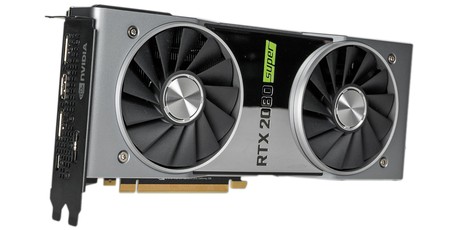
Manufacturer: Nvidia
UK price (as reviewed): MSRP £669 (inc. VAT)
US price (as reviewed): MSRP $699 (exc. tax)
Although Nvidia announced its three RTX Super parts at the same time, it opted for a staggered launch strategy which has seen the RTX 2060 Super and RTX 2070 Super enter the market first, followed a few weeks later – today – by the RTX 2080 Super. Pre-empting AMD’s Navi-based RX 5700 XT and RX 5700, it’s a plan that seemed to make sense. But it’s also a strategy that AMD claims to have deviously undermined with a pre-planned ‘bait-and-switch’ pricing strategy of its own; all of this has certainly made things more interesting, but whether the red team has been successful or not we’ll leave to you. To our eyes, it’s a story that still needs to fully play out given that AIB versions of the AMD cards are a few weeks away at least.
Returning to today’s launch, the RTX 2080 Super will serve as a relatively quieter replacement for what we consider to be the black sheep of the RTX family, the RTX 2080. Since September last year, the RTX 2080 Ti has enjoyed the position of top dog as far as consumer GPUs go, giving it a handy get-out clause when it comes to value for money; after all, there will always be a certain type of consumer willing to pay over the odds for the very best, and Nvidia would have been daft not to exploit that, especially given how chunky (i.e. expensive) Turing silicon is.
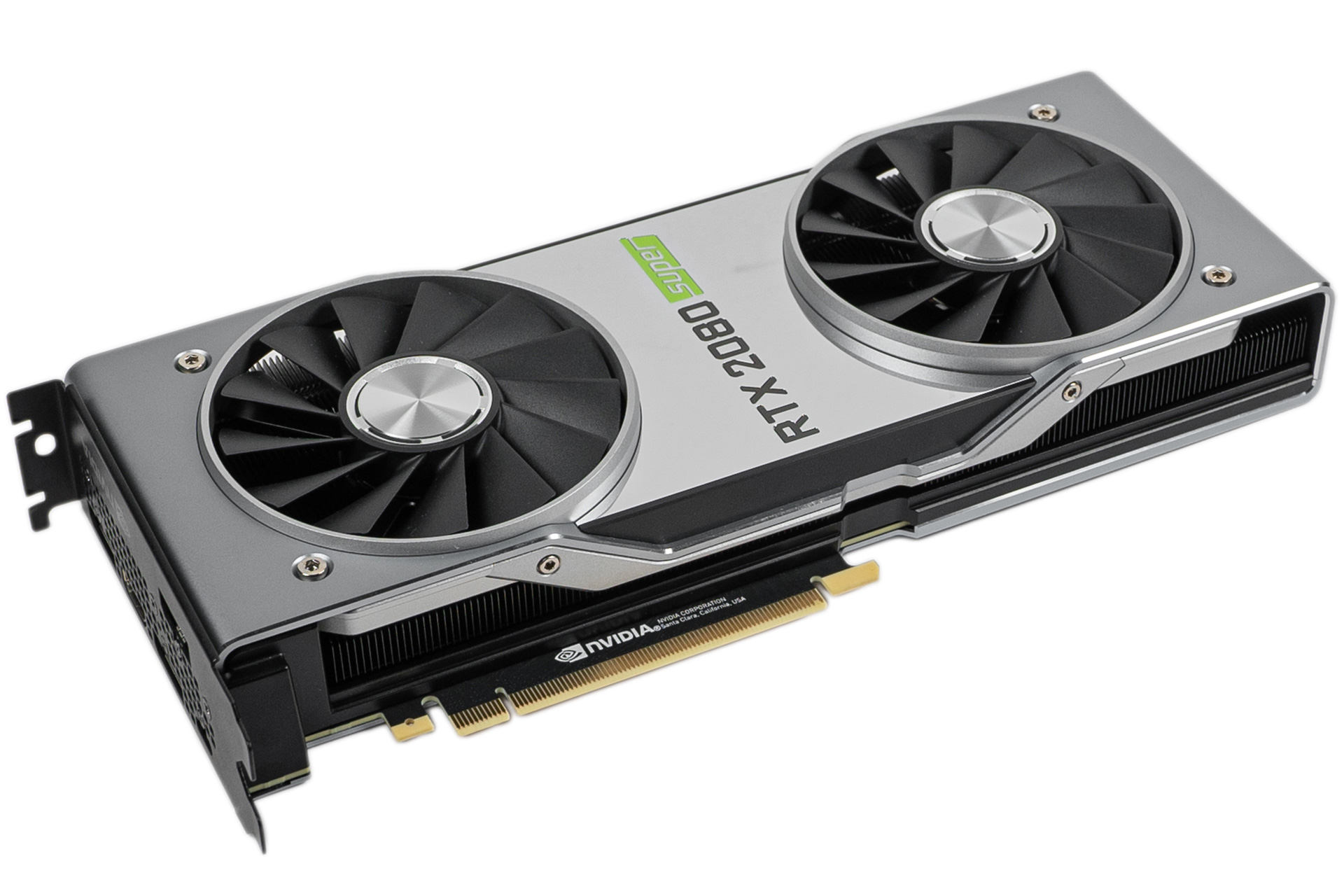
However, to this day RTX 2080 has never really managed to justify its bulky price tag relative to RTX 2070; it never had the Alpha status of RTX 2080 Ti, and it never quite managed to offer a truly comprehensive 4K gaming experience. AMD’s Radeon VII also sauntered in and gave RTX 2080 a run for its money, especially at higher resolutions, although it wouldn’t be hard to argue that AMD was capitalising on Nvidia’s inflated pricing there rather than truly challenging it. Not so with the recent launches, though: The four newest cards to market (RTX 2060 Super, RTX 2070 Super, RX 5700, and RX 5700 XT) have readjusted consumer expectations of premium graphics hardware, and all within a single week – one that will no doubt be remembered by tech press the world over as the ‘I-don’t-get-paid-enough-for-this-shit week’.
With Turing RTX pricing now at friendlier levels, then, the $699 RTX 2080 Super seemed poised to offer some serious grunt for consumers with more then $500 to spend on a GPU given that RTX 2080 levels of performance could now be found in the $499 RTX 2070 Super.
But then we saw the specs.
| Nvidia GeForce RTX 2080 Ti | Nvidia GeForce RTX 2080 Super | Nvidia GeForce RTX 2080 | Nvidia GeForce RTX 2070 Super | Nvidia GeForce RTX 2070 | Nvidia GeForce RTX 2060 Super | Nvidia GeForce RTX 2060 | |
|---|---|---|---|---|---|---|---|
| Architecture | Turing | Turing | Turing | Turing | Turing | Turing | Turing |
| Codename | TU102 | TU104 | TU104 | TU104 | TU106 | TU106 | TU106 |
| Base Clock | 1,350MHz | 1,650MHz | 1,515MHz | 1,605MHz | 1,410MHz | 1,470MHz | 1,365MHz |
| Boost Clock | 1,545MHz | 1,815MHz | 1,710MHz | 1,770MHz | 1,620MHz | 1,650MHz | 1,680MHz |
| Layout | 6 GPCs, 68 SMs | 6 GPCs, 48 SMs | 6 GPCs, 46 SMs | 5 or 6 GPCs, 40 SMs | 3 GPCs, 36 SMs | 3 GPCs, 34 SMs | 3 GPCs, 30 SMs |
| CUDA Cores | 4,352 | 3,072 | 2,944 | 2,560 | 2,304 | 2,176 | 1,920 |
| Tensor Cores | 544 | 384 | 368 | 320 | 288 | 272 | 240 |
| RT Cores | 68 | 48 | 46 | 40 | 36 | 34 | 30 |
| Texture Units | 272 | 192 | 184 | 160 | 144 | 136 | 120 |
| ROPs | 88 | 64 | 64 | 64 | 64 | 64 | 48 |
| L2 Cache | 5.5MB | 4MB | 4MB | 4MB | 4MB | 4MB | 3MB |
| Peak TFLOPS (FP32) | 13.4 | 11.2 | 10 | 9.1 | 7.5 | 7.2 | 6.2 |
| Peak TIPS (INT32) | 13.4 | 11.2 | 10 | 9.1 | 7.5 | 7.2 | 6.2 |
| Peak FP16 Tensor TFLOPS (FP16 Accumulate) | 107.6 | 89 | 80.5 | 72 | 59.7 | 57.4 | 51.7 |
| Giga Rays/sec | 10 | 8 | 8 | 7 | 6 | 6 | 5 |
| Transistors | 18.6 billion | 13.6 billion | 13.6 billion | 13.6 billion | 10.8 billion | 10.8 billion | 10.8 billion |
| Die Size | 754mm2 | 545mm2 | 545mm2 | 545mm2 | 445mm2 | 445mm2 | 445mm2 |
| Process | 12nm FFN | 12nm FFN | 12nm FFN | 12nm FFN | 12nm FFN | 12nm FFN | 12nm FFN |
| Memory | 11GB GDDR6 | 8GB GDDR6 | 8GB GDDR6 | 8GB GDDR6 | 8GB GDDR6 | 8GB GDDR6 | 6GB GDDR6 |
| Memory Data Rate | 14Gbps | 15.5Gbps | 14Gbps | 14Gbps | 14Gbps | 14Gbps | 14Gbps |
| Memory Interface | 352-bit | 256-bit | 256-bit | 256-bit | 256-bit | 256-bit | 192-bit |
| Memory Bandwidth | 616GB/s | 496.1GB/s | 448GB/s | 448GB/s | 448GB/s | 448GB/s | 336GB/s |
| TDP | 250W | 250W | 215W | 215W | 175W | 175W | 160W |
It’s fair to say that the ‘Super’ naming scheme has heretofore been misleading to those that keep a closer eye on GPU specs; RTX 2060 Super is far closer to the RTX 2070 in most regards, and the RTX 2070 Super is based on the same GPU as RTX 2080 as opposed to RTX 2070. For RTX 2080 Super, however, Nvidia is releasing a GPU much more in line with what its name suggests: It’s effectively a slightly bulked up and slightly faster RTX 2080.
By ‘slightly bulked up’, we mean the TU104 GPU now comes fully enabled with 48 Streaming Multiprocessors, but this is only a four-percent increase in the various key processing units (CUDA Cores, RT Cores, Tensor Cores, and texture units). The ROPs and L2 cache levels also remain unchanged. For a more detailed breakdown of the Turing architecture that covers these various units, head here.
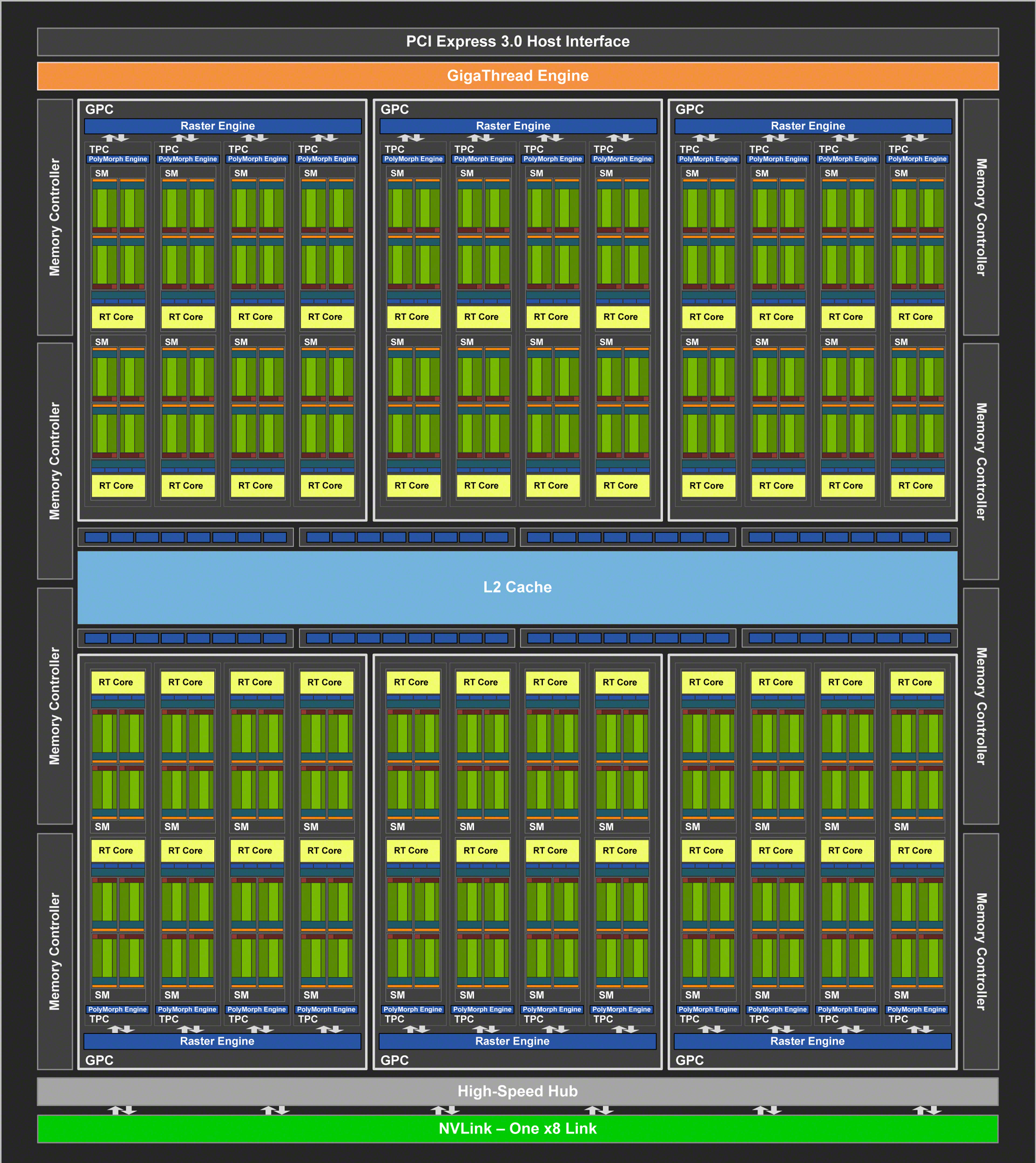
Nvidia also gives the new card more headroom in terms of clocks and power. The base and boost GPU clock speeds improve by nine and six percent respectively, though it should be noted that the RTX 2080 Founders Edition came with a boost clock of 1,800MHz, and the new part is only 15MHz higher than this. The TDP will also play a key part here, though, with 250W matching RTX 2080 Ti and presumably giving RTX 2080 Super more boosting headroom than the 215W RTX 2080 (or 225W if comparing Founders Edition parts).
Although the GDDR6 remains at 8GB capacity, the clock speed has been increased so as to produce a record-breaking effective data rate of 15.5Gbps and a bandwidth figure of 496.1GB/s – nearly 11 percent more than RTX 2080. This is the fastest GDDR6 out there, and regardless of everything else, we commend Nvidia for pushing the technology this hard, though it’s a shame not to see it replicated across all the Super cards.
Nvidia itself only expects performance to be six percent faster than the outgoing RTX 2080 on average. Bearing in mind that RTX 2070 Super is $499 and near-enough RTX 2080 in performance terms, it’s honestly hard to see what Nvidia is looking to achieve with RTX 2080 Super other than retaining a GPU that fills the substantial price gap between RTX 2070 Super and RTX 2080 Ti, which Nvidia has so far refused to price-drop. We will of course run the benchmarks anyway, but don’t get your hopes up.
Launch-wise, the Founders Edition card and a bunch of third-party SKUs will all be available immediately. The FE model is stock-clocked, will hit MSRP, and will be sold exclusively through Nvidia’s own store, while AIB versions will be available via the usual etailers for a variety of price points depending on specs and features.

MSI MPG Velox 100R Chassis Review
October 14 2021 | 15:04

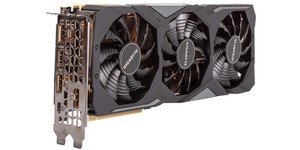
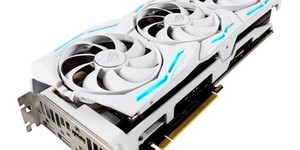
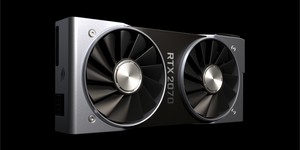




Want to comment? Please log in.